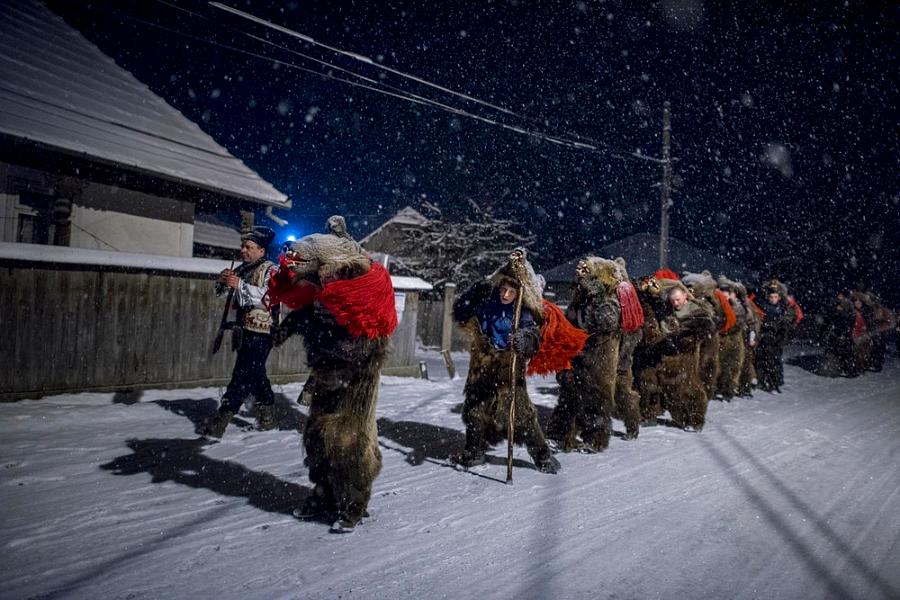Romania’s dancing bears featured in the New York Times, CNN

The dancing bears, one of Romania’s most thrilling winter traditions, have reached international fame after recently being featured in the New York Times and CNN.
Both media outlets have published stories featuring photos by Diana Zeyneb Alhindawi, a Romanian-born photographer now living in New York. In the two articles, Diana, who was born in rural Romania to a Romanian mother and an Iraqi father, recalls her childhood years, when she directly witnessed this tradition in a small town near Bacau, in Eastern Romania.
“It was a beautiful thing to wake up on a snowy December morning and hear the drumbeats and chanting echoing through the valley,” she told the New York Times.
Diana followed a bear dancers’ troupe as they prepared to perform and compete in the village square - where they were judged on the quality of their skins, costumes, dancing, and overall presentation -, then as they wandered through the village and performed at some homes where they were invited, and, in the end, as they went to the restaurant to celebrate.
"The bear dances were always one of my favorite memories," Diana told CNN. "It's a joyous event, although the dancers don't look that way in the pictures, they're trying to look fierce."
 A troupe of bears from Asău village performs in central Comăneşti during the town's annual Bear Parade and Competition. December 30, 2014. Comăneşti town, Bacău county, Romania.
A troupe of bears from Asău village performs in central Comăneşti during the town's annual Bear Parade and Competition. December 30, 2014. Comăneşti town, Bacău county, Romania.More of her photos of the dancing bears can also be seen on her personal website, together with other dramatic pictures she has taken in Congo, Uganda, Mexico, and Haiti.
The bear dance, which apparently was brought to Romania by the Gypsies (or Roma), who used to descend into towns from the forests in which they lived, bringing with them real bears, was adopted by locals, who started reenacting it through dance. In this ceremony, men dress up in bear skins adorned with big red tassels and dance around a tamer who plays the flute or the drum.
The bear dance usually takes place around New Year’s Eve as it is believed that this ceremony chases away the bad spirits of the year that has passed. It has many local variations in the Romanian region of Moldova, but the most well-known is the bear dance in the Moinesti-Comanesti area, where men dress up in real bear skins.
Another Romanian photographer, Alecsandra Dragoi, has won two international photography prizes with pictures showing the bear dance ceremony.
Romanian wins National Geographic Traveller’s 2015 photography competition
Romanian wins youth prize in world photography competition
editor@romania-insider.com











